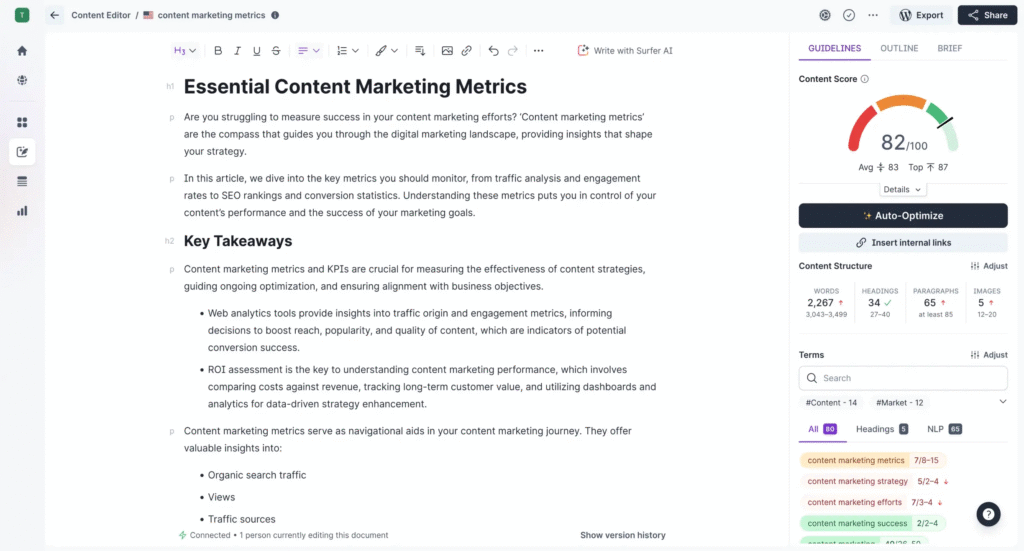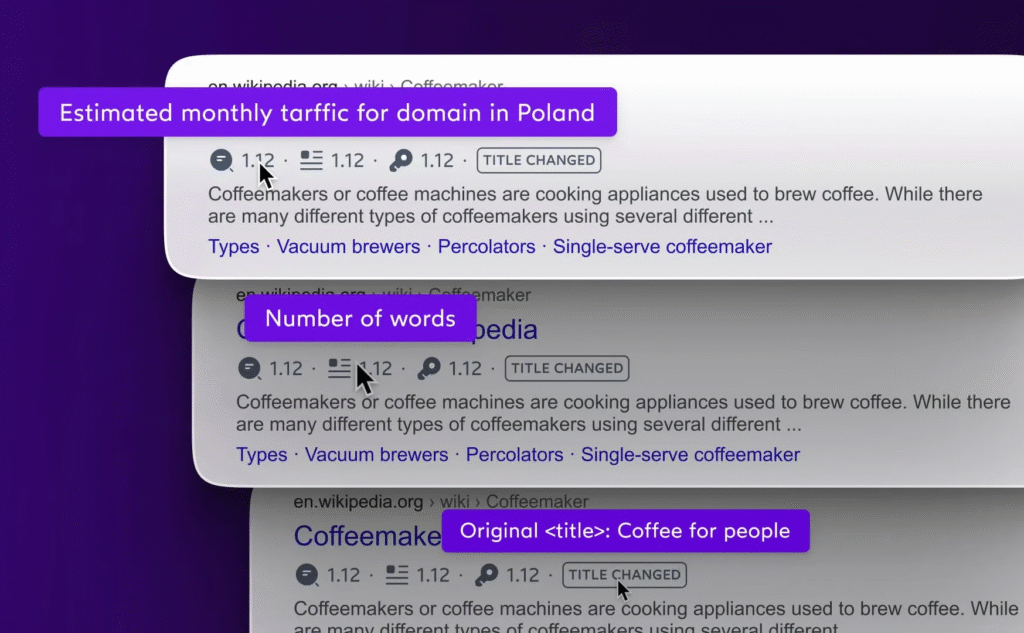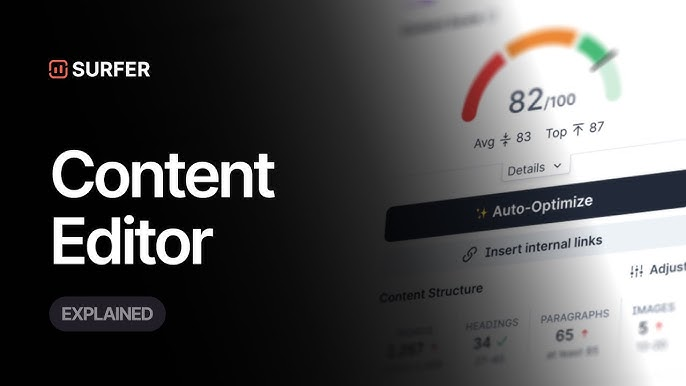In today’s digital landscape, ranking high on search engines is crucial for driving traffic to your blog. But how do you ensure that your blog posts reach their full potential? One of the most effective tools to boost your content’s SEO performance is Surfer SEO. In this comprehensive guide, we’ll walk you through how to use Surfer SEO to optimize your blog posts and improve your rankings on Google.
Surfer SEO is an AI-powered tool that analyzes top-ranking pages and helps you create content that meets the necessary SEO criteria. Whether you’re a seasoned SEO expert or a beginner, Surfer SEO is designed to make on-page SEO optimization a breeze.
Let’s dive into how you can leverage Surfer SEO to rank your blog posts effectively.
What is Surfer SEO?
Surfer SEO is an all-in-one SEO tool that provides data-driven insights and optimization recommendations to help you rank higher on search engines. By analyzing top-ranking pages for a given keyword, Surfer SEO compares key factors like keyword usage, backlinks, content length, and more.
With Surfer SEO, you get a roadmap for creating content that is tailored for SEO success. From keyword research to content optimization, Surfer SEO guides you through the entire process.

How Surfer SEO Works: An Overview
Surfer SEO works by analyzing ranking pages and gathering SEO data on factors such as:
- Keyword Usage: Ensuring your target keywords are used effectively throughout your content.
- Content Structure: Helping you create well-organized, user-friendly content.
- Backlink Analysis: Checking the backlinks of top-ranking pages to guide your strategy.
- Competitor Insights: Comparing your page with competitors to identify ranking opportunities.
- Content Audit: Identifying issues with your existing content to make improvements.
By evaluating these factors, Surfer SEO helps you understand what is working for high-ranking pages, so you can replicate that success in your own blog posts.
Setting Up Surfer SEO for Your Blog Post
Before you can begin optimizing your blog post, you need to set up Surfer SEO. Here’s how to get started:
- Create an Account: Sign up on Surfer SEO’s website. You can start with a trial or choose a plan that fits your needs.
- Set Your Target Keyword: Enter the keyword you want to rank for. Surfer SEO will analyze the top-ranking pages for that keyword.
- Analyze Top Results: The tool will provide a list of the top-ranking pages, their word count, keyword density, backlinks, and more.
- Optimize Your Blog Post: Based on the data provided by Surfer SEO, you can start optimizing your content by improving keyword usage, content length, and structure.

Step-by-Step Guide to Optimize Your Blog Post Using Surfer SEO
1. Keyword Research
The first step to optimizing your blog post is choosing the right keyword. Surfer SEO helps you find keywords that are relevant to your topic and have high search volume. Once you’ve chosen your target keyword, Surfer SEO will suggest related terms and phrases you can incorporate into your content.
- Target Keyword: The main keyword you want to rank for.
- LSI Keywords: Related keywords that help contextualize your content.
- Search Volume: Ensure your target keyword has a decent search volume.

2. Content Structure Optimization
Surfer SEO analyzes the structure of the top-ranking pages and provides recommendations for your blog post structure. Key factors include:
- Headings: Proper use of H1, H2, H3 tags to organize your content.
- Paragraph Length: Ensure your paragraphs are short and scannable.
- Bullet Points & Lists: Use bullet points to highlight key information for better readability.

3. Keyword Placement and Density
To rank your blog post, it’s essential to place your target keyword in key positions throughout your content. Surfer SEO analyzes keyword density across top-ranking pages and guides you on where to place your keyword.
- Title: Include the target keyword in the title.
- Meta Description: Add the keyword in the meta description.
- Introduction and Conclusion: Use your keyword naturally in the first and last paragraphs.
4. Content Length and Depth
Surfer SEO also looks at the word count of top-ranking pages. If the average word count of the top-ranking articles is 2,000 words, you should aim for a similar length to stay competitive.
- Content Depth: Create comprehensive content that thoroughly covers the topic.
- Use of Subheadings: Break up your content with descriptive subheadings.
5. Backlink Analysis
Backlinks play a crucial role in SEO. Surfer SEO can help you identify backlink opportunities by analyzing the top-ranking pages for your target keyword. Look for:
- High-Quality Backlinks: Aim for backlinks from authoritative sources.
- Internal Links: Include relevant internal links to other content on your website.
Surfer SEO’s Content Editor: How to Write Optimized Content
Surfer SEO’s content editor is one of its most powerful features. It helps you write optimized content directly in the platform. Here’s how to use it:
- Start Writing: Enter your content into the editor.
- Content Analysis: Surfer SEO will provide real-time suggestions on keyword usage, word count, and content structure.
- Adjust Based on Recommendations: Follow the suggestions to improve your content’s SEO.
- Final Check: Once you’ve made the necessary changes, perform a final check to ensure everything is optimized.
Why Surfer SEO is a Game-Changer for Bloggers
- Time-Saving: Surfer SEO eliminates the guesswork in SEO optimization, allowing you to focus more on content creation.
- Data-Driven Insights: The tool gives you actionable insights based on real-time data from top-ranking pages.
- User-Friendly: Surfer SEO is designed to be easy to use, even for beginners.

Conclusion
Incorporating Surfer SEO into your content creation process can significantly enhance your ability to rank higher on Google. By following the recommendations for keyword usage, content structure, and backlinks, you’ll be able to create blog posts that are optimized for both users and search engines.
By regularly using Surfer SEO, you can ensure that all your blog posts are optimized for SEO, giving you a competitive edge in the ever-evolving world of search engine optimization.
FAQ Section
1. What is Surfer SEO?
Surfer SEO is an AI-powered SEO tool that provides insights and recommendations to help you optimize your blog posts and rank higher on Google. It analyzes top-ranking pages for your target keyword and offers data-driven recommendations.
2. Is Surfer SEO easy to use?
Yes, Surfer SEO is designed to be user-friendly, with an intuitive interface that guides you through the optimization process. Even beginners can use it to improve their content’s SEO.
3. How does Surfer SEO help with keyword research?
Surfer SEO analyzes search volume, keyword density, and related terms to help you select the most effective keywords for your content.
4. How long does it take to see results with Surfer SEO?
While Surfer SEO helps optimize your content immediately, it may take several weeks for your content to rank higher on Google, depending on competition and other SEO factors.
5. Can I use Surfer SEO for all types of content?
Yes, Surfer SEO can be used to optimize any type of content, from blog posts to product pages, ensuring they are SEO-friendly and more likely to rank higher.







